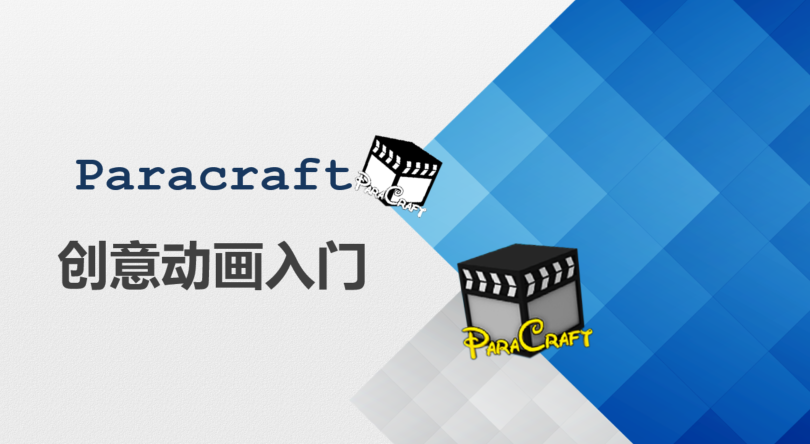
当前课程知识点:Chinese Folk Motif Arts > Unit 3. Chinese Shadow Puppetry: Characters Developed by Scissors and Nicking Chisels > 3.1 A Brief Introduction of Chinese Folk Paper Cut > 3.1 A Brief Introduction of Chinese Folk Paper Cut
返回《Chinese Folk Motif Arts》慕课在线视频课程列表
返回《Chinese Folk Motif Arts》慕课在线视频列表
同学们 下午好
今天 我们讲第三讲
中国影子 剪刀和刻刀下游走的精灵
一 民间剪纸概述
民间剪纸是中国古老的传统民间艺术之一
它以纸为加工对象
以剪刀或刻刀为工具进行创作
是劳动人民为满足自身的精神和物质文化需求
所创造的一种艺术形式
因其材料易得 成本低廉 效果立见
在民间广为流传
剪纸在民俗活动中占有重要位置
它往往通过谐音 象征 寓意等手法
提炼 概括自然形态
构成美丽的装饰图案
剪纸的用途虽然有实用性
如绣花的花样
但主要还是用于美化生活的装饰品
比如 窗花 灯彩 房间布置
和礼品上的装饰等
剪纸本身也可以作为一种礼物来赠送他人
剪纸的表现方法由于工艺的局限
它的图形之间都是互相连接的
否则 它就难于制作
也不利粘贴使用
而这一短处 恰恰成了它的艺术特点
纵横相连的线条
产生了比自然形态更美的装饰形象
不论作品的大小
都可以表现明显的主题
因此 剪纸成为一门独立的民间艺术
剪纸 是变异性与稳定性的统一
这张剪纸是我国发现最早
而且有据可查的剪纸的成品
它是在新疆吐鲁番火焰山附近考古发掘的
距今1500多年
剪纸作品有“对马团花”和“对猴团花”
左边是残片 右边是复原后的团花
同时出土的还有一张叫做“对猴团花”
右边 是复原后的团花形象
这是现代民间创作的“对鸟团花”
我们跟1500多年前的这些团花比较一下
从形式上来看 它们都差不多
为什么中国的剪纸在民间流传了1000多年
到现在它的样式都没有很大改变呢
这是因为 民间剪纸的传承方式
它是世代相袭
它的基本纹样相对固定
这使剪纸的外在形式它的变化很小
一些经典的剪纸作品
都会被邻近的乡村人们互相传送 互相临摹
因此得以流传
比如说 张家的媳妇有一个好的纸样
李家的媳妇就可以把它借去进行复制
民间剪纸的传承方式有两种
一种是烟熏替样 一种是记忆模拟
烟熏替样就是用煤油灯
把原来的纸样放在上面 在煤油灯上一熏
烟子就在下面留下了一个影像
记忆 就靠人的记忆
这就不是很好传承
例如 张家的媳妇用了李家的花样
而张家的女儿以后出嫁
又把这个花样带给了她的婆家
就这样 一遍一遍地就传过去了
人们也会按照自己的理想和审美爱好
对原来的图样进行加工 然后改动
在这样的传承中间
作品的基本格局被保存下来了
但是它的一些局部
会随着时间 民族 地区 习俗的差异
而进行一些微妙的变化
这两张剪纸是出于同一个模子
就是一匹马 拉一辆车
我们看一开始它的传承
在同一个省里面传承
它的前后的差别不是很大
当它传到了山西甚至传到了山东之后
这个图样发生了很大的变化
最后一张甚至在马车后面还加上一只小狗
剪纸 又是民俗功能与艺术价值的统一
民间剪纸是民俗活动中的一种艺术形式
它依附于民间特定的文化背景与生活环境
民俗活动内容的剪纸不能随意地发挥
它要受到形式和内容的多种局限
也是由于这些局限
形成了民间剪纸的程式化特征
使民间剪纸在完成了一定的民俗功能之外
又极力地显示着自己的独立性
作者在民俗剪纸作品中倾注他的情感和美
使作品在完成民俗功能的同时
升华为艺术作品
例如 这张剪纸叫做《疗病娃娃》
如果一个娃娃生病了
这个老奶奶就要剪一串小人人
用这个剪纸来祈福
但愿这个娃娃的病赶快好
这张剪纸用了“二方连续”的构成方式
由一对小人组成一个单元
然后连续连续地变化 横向排列
表达了生生不息 子孙延绵不断的愿望
这张剪纸叫做“倒吊驴”
因为有些小孩他“闹夜”
他白天睡觉 晚上就吵
搞得大人不得安宁
这个时候 他的长辈就要剪一张《倒吊驴》
据说 这能够把小孩的睡眠倒过来
让他白天清醒 晚上睡觉
结婚时都要剪一对《坐帐喜花》
把它贴在新房里面
它包含了男女之情 生儿育女等寓意
这是《扣碗》剪纸 是结婚用的
这两个碗象征一男 一女
合起来就变成了一个家 这是一种民俗
我们知道
我们现在结婚都要喝什么“交杯酒”
但是古人不喝交杯酒
他们要举行“合卺仪式”
北方有那种老葫芦
把它剖开之后 当成水瓢来舀水
男女双方各拿一半 拿来喝酒
这就是“合卺之美”
这个剪纸的布局一上一下 一反一正
它的布局均匀 线条流畅
很好的表达了和和美美的意境
这张民俗剪纸叫做《扫天婆》
我们看有一个女子
拿着两把扫帚 她在扫天
为什么要扫天呢
因为这个天老是不下雨
乌云笼罩在天上
这个时候就要用扫帚把它扫开
拨开乌云见太阳
这张剪纸的人物造型非常夸张
具有装饰味 还非常幽默
做了一个像舞蹈一样的动作
你看她的脚丫子
还顺着跳舞的起势在动 很有意思
有一个问题
为什么在剪纸作品中
会出现民俗性与艺术性共存的现象
哪位同学回答
我认为 爱美之心 人皆有之
然后 这种剪纸艺术能够一直流传到今天
是因为它是人们的一种精神寄托
表达了人们对美好生活的一种向往
而且民俗与生活情趣是分不开的
这种漂亮的剪纸
为老奶奶们的生活增多了一份新的情趣
好 回答得很好
-A brief introduction of the study unit
-1.1 The meaning of learning Chinese folk motifs
--1.1 The meaning of learning Chinese folk motifs
-1.2 A brief introduction of graph
--1.2 A brief introduction of graph
-1.3 The basic categories of Chinese folk motifs
--1.3 The basic categories of Chinese folk motifs
-1.4 The basic characteristics of Chinese folk motifs art
--1.4 The basic characteristics of Chinese folk motifs art
-1.5 Research on the questions and the motifs cases
--(1) Researches and case studies on motifs
--(2)Research on Traditional Motifs
-1.6 Unit assignment: thinking questions
-1.7 Online Quiz
--1.7 Online Quiz
-1.8 Expanded learning resources
--Embroidery of Guizhou Miao ethnic group (Video)
--The Magnificent Miao Ethnic Group: Wordless Book of Miao (Video)
--Chinese Folk Motifs(Graphics and images)
--Websites
-A brief introduction of the study unit
-2.1 The modeling methods of folk motifs
--2.1 The modeling methods of folk motifs (Part 1)
--2.1 The modeling methods of folk motifs (Part 2)
-2.2 Aesthetic implication of folk motifs
--2.1 Aesthetic implication of folk motifs (Part 1)
--2.2 Aesthetic implication of folk motifs (Part 2)
-2.3 Research on the questions and the motifs cases
--Research on the questions
-2.4 Art Practice: Canton Embroidery
-2.5 Unit assignment: Judgment and thinking questions
--Judgment questions
-2.6 Expanded learning resources
--My hereditary treasure: new year woodblock print made by Tai Liping (Video)
--Taohuawu new year woodblock print (Graphics)
-A brief introduction of the study unit
-3.1 A Brief Introduction of Chinese Folk Paper Cut
--3.1 A Brief Introduction of Chinese Folk Paper Cut
-3.2 The craft of Chinese folk paper cut
--3.2 The craft of Chinese folk paper cut
-3.3 The techniques of expression of Chinese folk paper cut
--3.3 The techniques of expression of Chinese folk paper cut
-3.4 A brief introduction of Chinese shadow puppetry
--3.4 A brief introduction of Chinese shadow puppetry
-3.5 The artistic characteristics of Chinese shadow puppetry
--3.5 The artistic characteristics of Chinese shadow puppetry
-3.6 The modeling of Chinese shadow puppetry
--3.6 The modeling of Chinese shadow puppetry
-3.7 Art Practice: Paper Cut
--A Brief Introduction of Art Practice
--Traditional Chinese Paper Cutting : Butterfly
--Traditional Chinese Paper Cutting : Baby with twisted knors of har
--Paper-cut creative case (picture)
-3.8 Unit assignment: Paper Cut creation
-3.9 Online Quiz
--3.9 Online Quiz
-3.10 Expanded learning resources
--Backstage performance of shadow play (video) (Ⅰ)
--Backstage performance of shadow play (video) (Ⅱ)
--Shadow play "Monkey Eating Peach"
--Analysis of Chinese Shadow Puppet Art
-A brief introduction of the study unit
-4.1 The State of Chu and Chu Culture
--4.1 The State of Chu and Chu Culture
-4.2 Representative Graphics of Chu Culture Remains
--4.2 Representative Graphics of Chu Culture Remains
-4.3 Intangible Cultural Heritage of Chu Culture
--4.3 Intangible Cultural Heritage of Chu Culture (Part 1)
--4.3 Intangible Cultural Heritage of Chu Culture (Part 2)
-4.4 Research on the questions and the motifs cases
--Chu Culture Relics Graphics
--The motifs case : Tujia ethnic Brocade "Xilan Kapu"
-4.5 Art Practice: Decorative painting
--Art Practice: Decorative painting sketch
--Art Practice: Decorative painting modeling
--Art Practice: Decorative painting coloring
-4.6 Unit assignment
--4.6 Unit assignment
-4.7 Online Quiz
--4.7 Online Quiz
-4.8 Expanded learning resources
--Bronze ware, lacquerware, silk fabrics of Chu culture
--Yao ethnic bright-colored embroidery applique, Dong ethnic brocade
-A brief introduction of the study unit
-5.1 Totem
-5.2 Panhu Worship
-5.3 The Legends of Totem in Costumes
--5.3 The Legends of Totem in Costumes
-5.4 The Tattoos of the Li Ethnic Group
--5.4 The Tattoos of the Li Ethnic Group
-5.5 Art Practice: Tie-dye
--Xiang Yunfang tie-dyeing (clamp-tie) video
--Xiang Yunfang tie-dyeing (bundle-tie) video
--Xiang Yunfang tie-dyeing (dog-paw flower) video
-5.6 Research on the questions and the motifs cases
--Totem problem exploration
--Traditional graphics cases:The "Hundred-bird Clothes" of the Miao ethnic in Guizhou
-5.7 Unit assignment: Tie-dye creation and thinking questions
--5.7 Unit assignment: Tie-dye creation and thinking questions
-5. 8 Expanded learning resources
--Miao embroidery in Taijiang (Video)
--The Magnificent Miao Ethnic: Who made life so glorious (Video)
--National costumes of southern China
-A brief introduction of the study unit
-6.1 Philosophical Reflections on the Harmony of Taiji and “Yin and Yang”
--6.1 Philosophical Reflections on the Harmony of Taiji and “Yin and Yang”
-6.2 “Nine Palaces” and Its Spatial Layout
--6.2 “Nine Palaces” and Its Spatial Layout
-6.3 Plane Static Four-dimensional Space
--6.3 Plane Static Four-dimensional Space
-6.4 “Almorphism” of Batik Graphics
--6.4 “Almorphism” of Batik Graphics
-6.5 Ingenious Calculations by Folk Carpenters
--6.5 Ingenious Calculations by Folk Carpenters
-6.6 Research on the questions and the motifs cases
--Research on the questions and the motifs cases
--Introduction to Miao Batik (Video)
--Danzhai Batik - Painting Wax (Video)
-6.7 Unit assignment: thinking questions
--6.7 Unit assignment: thinking questions
-6.8 Online Quiz
--6.8 Online Quiz
-6.9 Expanded learning resources
--The image of dragon in Chinese folk motifs (graphic and image)

